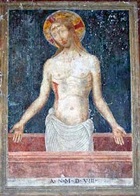

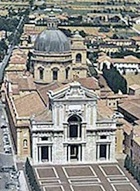
This museum was established in 1924 in the Convento di San Bernardino at Santa Maria degli Angeli to house art removed from the church. Opening hours etc are published on the website of Musei Ecclesiastici Umbri.
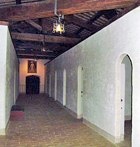
Marble relief (9th or 10th century)
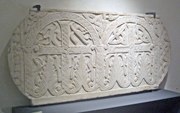
This relief can be traced back to the choir chapel that was built on to the Portiuncula in 1485. It may well have come originally from Portiuncula itself, and perhaps once decorated its altar.
Christus Patiens (ca. 1236)
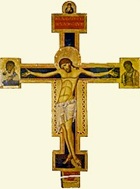
St Francis (ca. 1255)

-
✴The Latin inscription on the open book that St Francis holds translates: "This was my bed when I was living and when I was dying". This inspired the tradition that the wood used for this panel came from the board upon which St Francis died and upon which his body was laid as it was taken from the Portiuncula for burial in Assisi. However, the "bed" is more probably a reference to the cross on which Christ died.
-
✴The long inscription in the lower part of the panel is taken from the bull “Confessor Domini gloriosus” (1237), in which Pope Gregory IX defended the authenticity of the stigmata. However, the work itself probably celebrated the bull “Benigna operatio” (1255), in which Pope Alexander IV specifically endorse the validity of St Francis’ side wound.
St Francis (13th century)

Columns (ca. 1485)
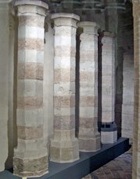
Figures of the Annunciation (ca. 1486)

These detached frescoes were painted on the curved exterior wall of the apse of the Portiuncula. Like the Crucifixion that remains in situ there, they are attributed to Perugino (or to his workshop). They were plastered over in the 16th century and re-discovered in the early 19th century. The artist Antonio Castelletti is documented as restoring the frescoes of the “Cappella dell’ Annunziata” in 1828, and this seems to have involved the effective repainting of these frescoes. They were detached in 1975.
Altar dossal (ca. 1490)
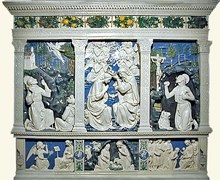
Anastasia Baglioni Sforza, the wife of Braccio III Baglioni, commissioned this glazed terracotta panel from Andrea della Robbia for the chapel near the Portiuncula that Braccio II Baglioni had built in 1458. It was moved to Santa Maria degli Angeli when Baglioni's chapel was demolished and was until recently on the altar in the crypt.
The main scenes of the Assisi dossal depict:
-
✴the Coronation of the Virgin:
-
✴the stigmatisation of St Francis (to the left); and
-
✴the penitent St Jerome (to the right).
The predella panels depict:
-
✴the Annunciation;
-
✴the Nativity; and
-
✴the Adoration of the Magi.
Madonna and Child with angels (15th century)

Flying angels (15th century)
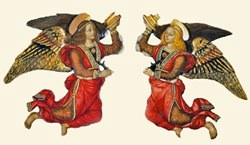
These panels depicting flying angels were intended to hold candles, probably to the sides of a venerated image. They were first documented in the Cappella delle Reliquie in 1872, when they were to the sides of the Crucifix by Giunta Pisano (see above). They are usually attributed to Lattanzio di Nicolò, and some scholars detect the input of his father, Nicolò di Liberatore, l’ Alunno.
Madonna del Latte (ca. 1500)
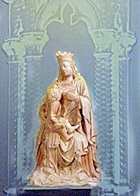
Pietà (1508)
